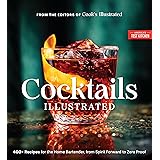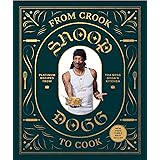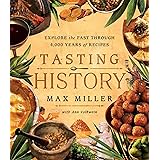Are you contemplating a product launch, particularly one anchored in sustainability and health-conscious consumer values? The strategic discussions in the accompanying video offer a compelling blueprint for how a new offering, such as an eco-friendly herbal tea, can be positioned for success. A comprehensive strategy is often assembled from diverse expert perspectives, integrating marketing, financial prudence, and keen market awareness to navigate competitive landscapes effectively.
Crafting the Vision for a Sustainable Product Launch
The foundation of any successful new product is its core value proposition. For an eco-friendly herbal tea, the initial concept often revolves around delivering a healthier alternative to existing market options while concurrently championing environmental responsibility. This particular herbal tea, comprising organic ginger, lemongrass, and honey, is designed to be refreshing, inherently healthy, and notably, bottled in 100% biodegradable materials. Such a product is not merely about hydration; it embodies a lifestyle choice for consumers seeking caffeine-free, low-sugar beverages that align with their ethical considerations.
Identifying the precise consumer segment is paramount; for this herbal tea, the focus is placed upon health-conscious young adults, particularly those residing in urban environments. These individuals typically seek convenient, natural drink options that do not compromise their values. The unique selling proposition is significantly strengthened by the eco-friendly packaging, which is intended to forge a strong and distinct identity in a crowded market. A product’s identity, therefore, is not just about taste but also about its tangible commitment to global well-being.
Strategic Marketing for an Eco-Friendly Herbal Tea
An impactful marketing strategy is considered essential for capturing market share for any new product, especially one with a mission like an eco-friendly herbal tea. A proposed three-part approach often begins with robust social media engagement across platforms such as Instagram, TikTok, and YouTube. Content for these channels typically includes short videos demonstrating the health benefits of herbal tea, glimpses into its production process, and authentic customer testimonials, all designed to foster connection and trust with the target audience.
Collaborations with influential figures represent a second critical marketing pillar. Partnerships with fitness influencers, nutritionists, and eco-friendly lifestyle bloggers are strategically pursued, as their endorsements can impart significant credibility to the product. These figures often possess engaged audiences who trust their recommendations, making them ideal channels for promoting a health- and sustainability-focused beverage. Furthermore, organizing free tasting events in high-traffic locations like supermarkets and universities allows for direct product interaction, providing potential customers with a first-hand experience of the tea’s quality and taste. This multi-faceted approach aims to build broad awareness and encourage trial.
Branding efforts are often encapsulated in a memorable slogan, with “Sip Healthy, Live Green” being proposed for this eco-friendly herbal tea. This slogan succinctly communicates the dual benefits of the product: personal health and environmental responsibility. Such messaging is carefully crafted to resonate deeply with the identified target audience, amplifying the brand’s core values. The intentional selection of marketing channels and brand messaging works synergistically to create a powerful and cohesive market presence, crucial for a new entrant.
Financial Planning and Profitability for New Products
Robust financial planning forms the bedrock of a new product launch, ensuring its viability and sustained growth. For this particular eco-friendly herbal tea, the production cost is estimated at 50 cents per bottle, while a selling price of $1.20 per bottle is projected. This pricing strategy yields an impressive profit margin of approximately 58%, which is considered healthy for a new product endeavor. Such a margin allows for reinvestment and provides a buffer against unforeseen costs during the initial launch phase.
An initial budget of $5,500 has been allocated for the launch, with $5,000 specifically designated for marketing and promotional activities. Prudent financial management is emphasized, particularly regarding influencer partnerships, where starting with micro-influencers is often recommended to maximize budget efficiency. Micro-influencers typically charge less but can offer high engagement rates, providing a cost-effective avenue for initial outreach. The expectation is that if 10,000 bottles are sold within the first three months, the product can achieve a break-even point in about six months, a critical milestone for any new business venture.
Furthermore, strategic allocation of the marketing budget is vital, with at least 20% being earmarked for digital advertising channels like Facebook and Instagram sponsored posts. These platforms offer measurable results and can be optimized for reach and conversion, providing valuable insights into campaign performance. By closely monitoring expenditures and strategically deploying funds, the financial team ensures that resources are utilized effectively to support the launch and contribute to long-term profitability.
Navigating the Competitive Landscape with a Green Advantage
Understanding the competitive environment is an indispensable component of any product launch strategy. In the bottled tea segment, established players such as “Teh Botol” and “Fresh Tea” typically dominate the market. However, a significant differentiator for the eco-friendly herbal tea lies in its healthier profile and sustainable packaging. Many conventional bottled teas often contain high sugar levels and utilize plastic packaging, areas where the new product presents a clear advantage.
Contemporary consumers are increasingly conscious of sustainability, with surveys indicating that a remarkable 70% of young consumers express a willingness to pay a premium for eco-friendly products. This statistic underscores the strong market demand for offerings that align with environmental values, providing a strategic opening for the organic herbal tea. The product’s clear advantages—being healthier, organic, and environmentally friendly—are poised to resonate strongly with this growing segment of conscious buyers.
However, vigilance against competitor imitation is often advised. Once competitors recognize the success of eco-friendly packaging, they may attempt to replicate it. Consequently, building a robust brand identity from the outset is considered crucial for differentiation and market longevity. Highlighting the product’s unique attributes, such as its 100% biodegradable bottle, in every marketing campaign can solidify its position and attract environmentally aware consumers, ensuring that the brand’s core message of “Good for you, good for the planet” is consistently communicated.
Building a Distinct Brand Identity and Messaging
The establishment of a strong and unique brand identity is an essential element in differentiating any new product, particularly in a competitive market like beverages. For this eco-friendly herbal tea, the commitment to sustainability extends beyond just the product’s contents to its packaging. The suggestion to print a direct message on the bottle itself, such as “This bottle is 100% biodegradable. Good for you, good for the planet,” significantly reinforces the brand’s core values. This direct communication strategy connects instantly with customer values and demonstrates transparency.
Developing engaging social media campaigns, perhaps featuring a unique hashtag like #DrinkGreen or #SipHealthyLiveGreen, further encourages user-generated content and online community building. Such initiatives empower customers to share their experiences and advocate for the brand, organically expanding its reach. While emphasizing eco-friendly branding is paramount, a balanced approach is maintained to ensure the product remains accessible.
Positioning the eco-friendly herbal tea as a premium yet affordable option is a delicate but crucial task. The aim is to avoid appearing excessively expensive compared to competitors while also steering clear of a cheap perception. The brand’s value proposition is strategically framed around offering a healthy drink coupled with a commitment to sustainability, ensuring customers perceive a clear benefit that justifies its price point. This careful brand positioning is vital for attracting a broad consumer base without compromising its unique identity.
Consolidating the Launch Plan and Next Steps
A well-defined action plan is indispensable for transforming strategic discussions into tangible outcomes for a product launch. For the eco-friendly herbal tea, the marketing team is tasked with initiating the social media campaign, establishing contact with micro-influencers, and meticulously planning two initial tasting events. Concurrently, the finance team will meticulously manage the allocated $5,000 budget, ensuring that at least 20% is directed toward digital advertising for maximum measurable impact.
Continuous competitor analysis is maintained to monitor market reactions and anticipate any strategic responses from existing players. This vigilance ensures that proactive adjustments can be made to the launch strategy if necessary. With a target launch date set for two months, all teams are aligned on their responsibilities and timelines. This collaborative and structured approach provides a strong foundation for the successful introduction of the eco-friendly herbal tea to the market, with a collective expectation of positive results.











